
In the Edo period, Camaydo-mura was a suburb of the capital. A special fame here was the unusual plum tree Garubai. The tree died after the 13th Meiji flood.
On the site where it grew, there is a memorial stele, the inscription reads: “At this place in the Edo period, the owner of the land Kie-mon broke a plum garden and called it” Umzyasiki “or” Seikoan. “The garden became known as a place of entertainment and contemplation of plum blossoms.
There was a famous plum tree in it, the branches of which were like a lying dragon: they hung down and went to the ground, and then, at a considerable distance, went outside, forming a new trunk… “This engraving was destined to play a role in the history of the western painting.
Vincent Van Gogh copied it, studying the pictorial techniques, composition structure and emotional structure of Ukiyo-e engraving, which at that time was perceived as the most characteristic form of art for Japan.
 Plum Orchard in Camideau by Utagawa Hiroshige
Plum Orchard in Camideau by Utagawa Hiroshige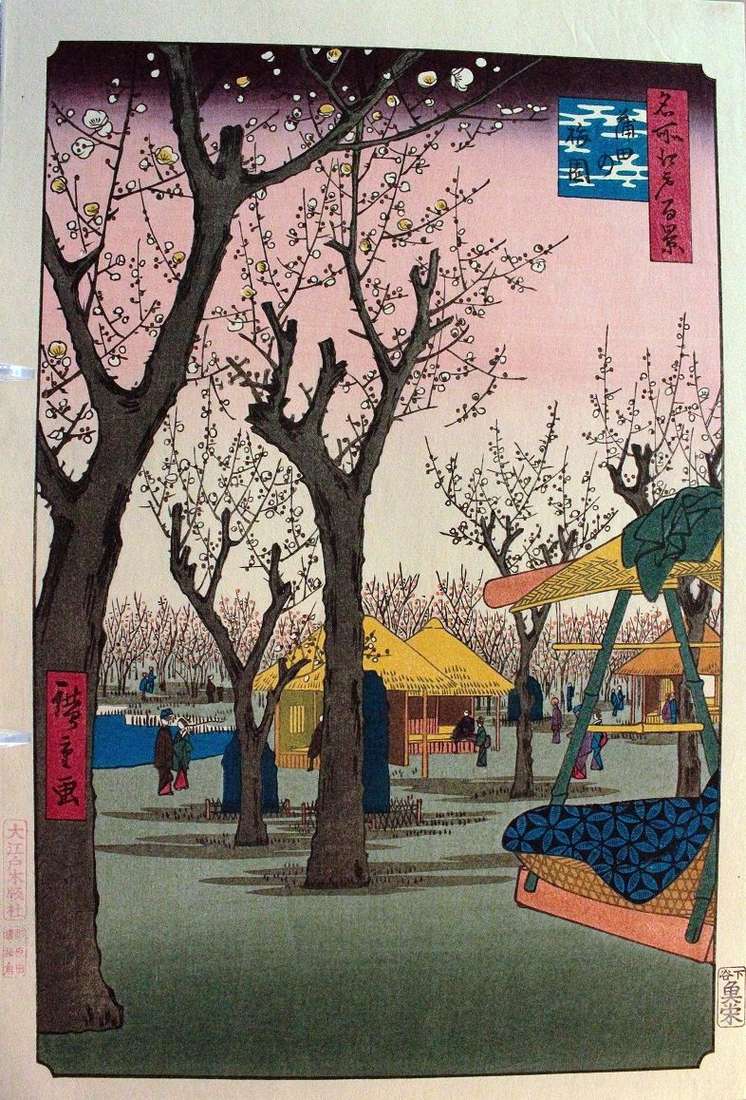 Plum Orchard in Kamata by Utagawa Hiroshige
Plum Orchard in Kamata by Utagawa Hiroshige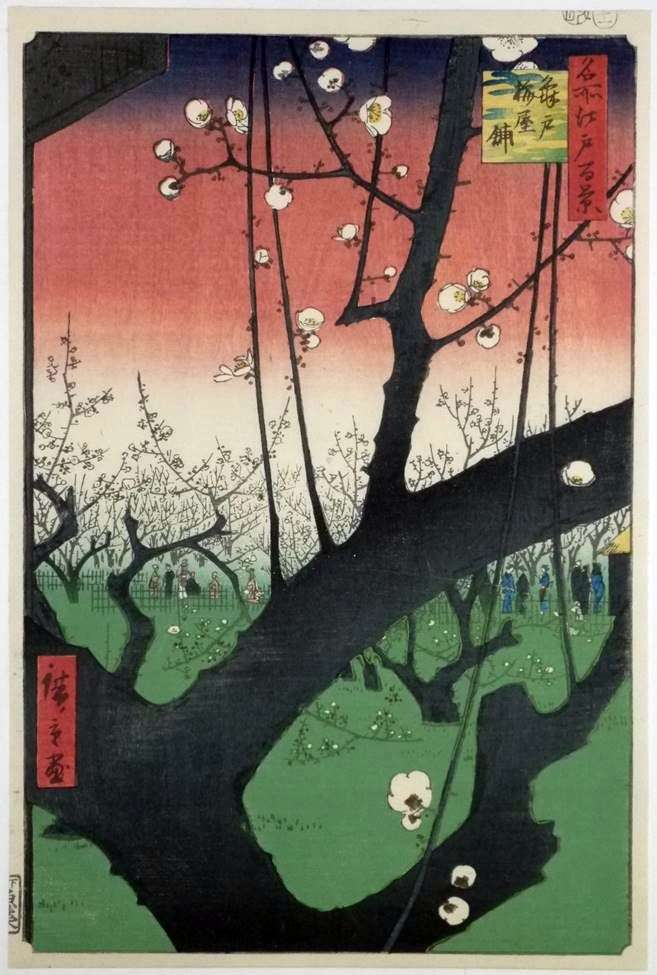 Kameydo Plum Orchard – Hiroshige
Kameydo Plum Orchard – Hiroshige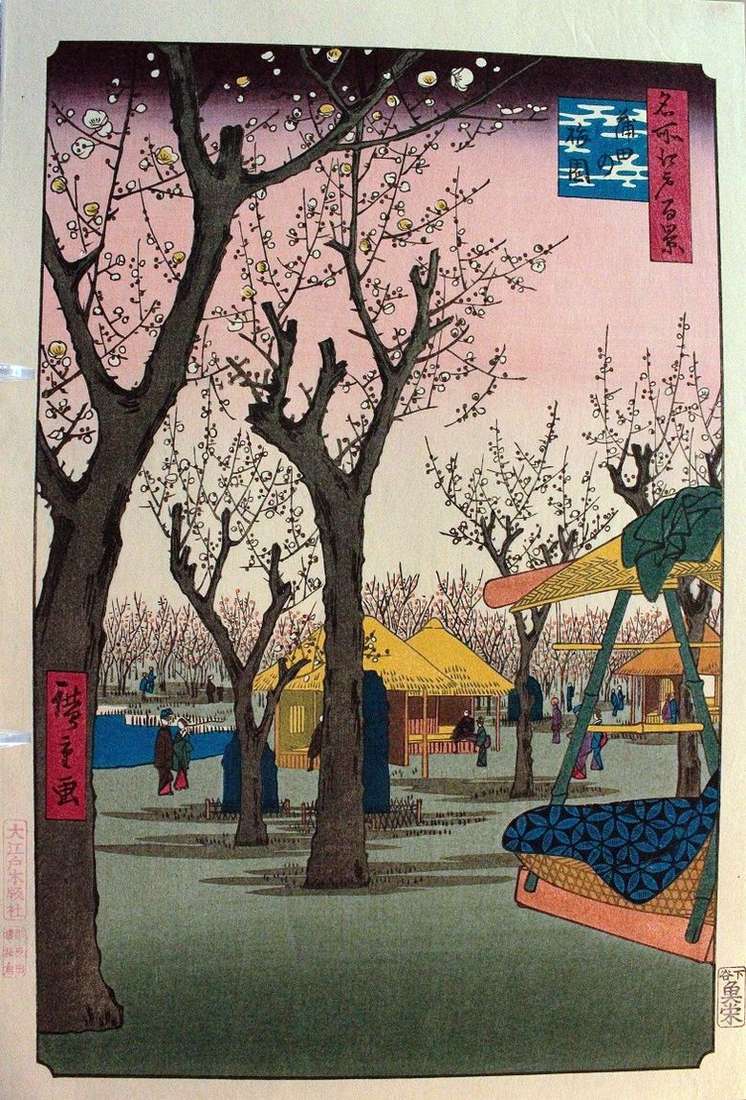 Plum Orchard en Kamata – Utagawa Hiroshige
Plum Orchard en Kamata – Utagawa Hiroshige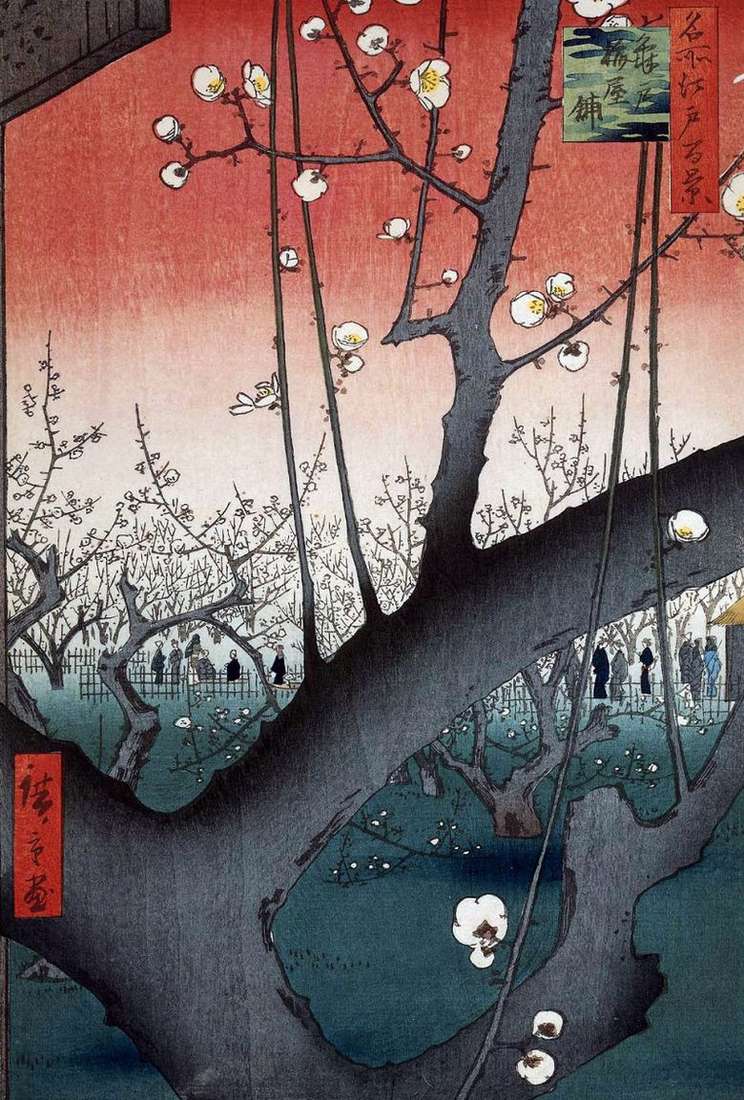 Kameydo Plum Orchard – Utagawa Hiroshige
Kameydo Plum Orchard – Utagawa Hiroshige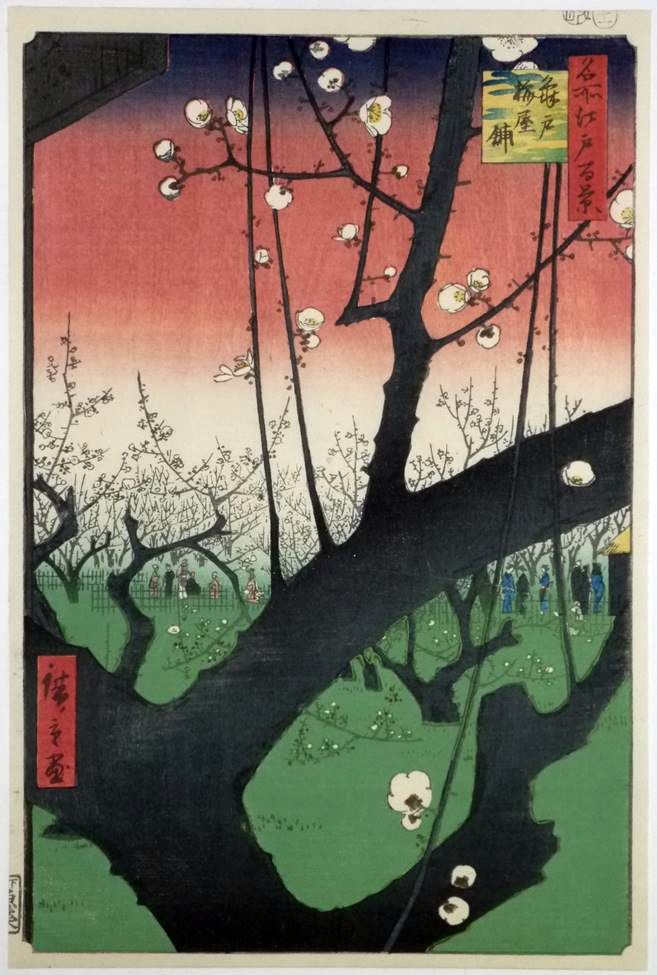 Verger de pruniers Kameido – Ando Hiroshige
Verger de pruniers Kameido – Ando Hiroshige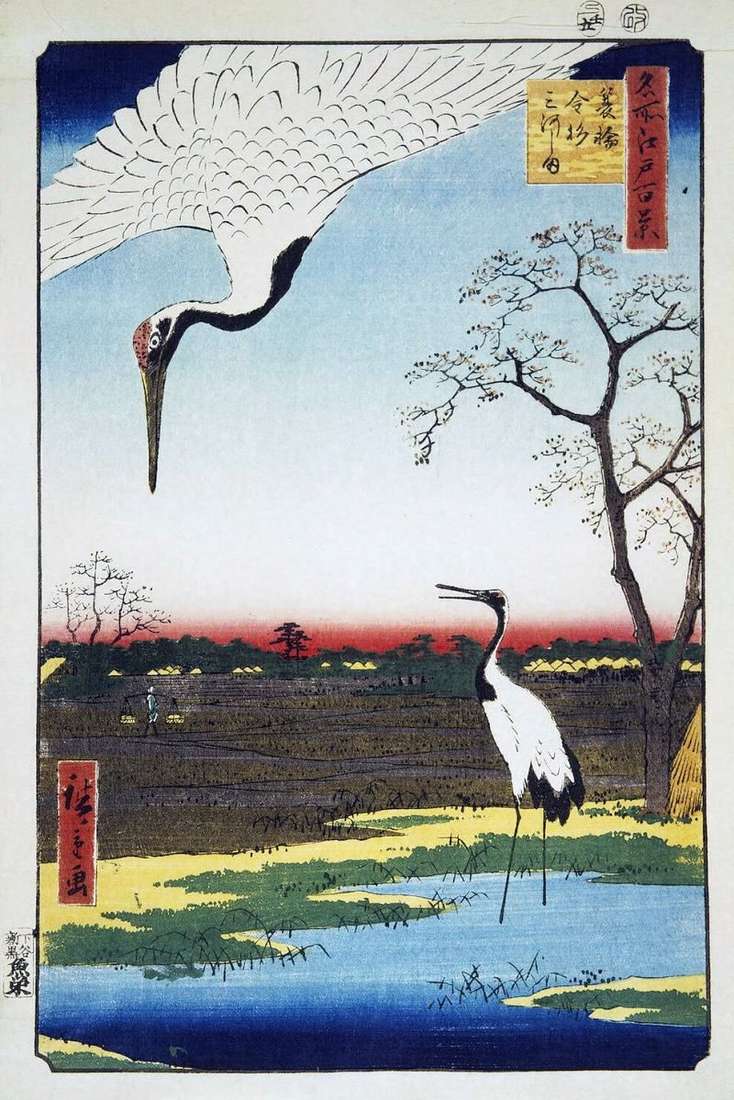 The villages of Minova, Kanasugi and Mikavasima by Hiroshige Ando
The villages of Minova, Kanasugi and Mikavasima by Hiroshige Ando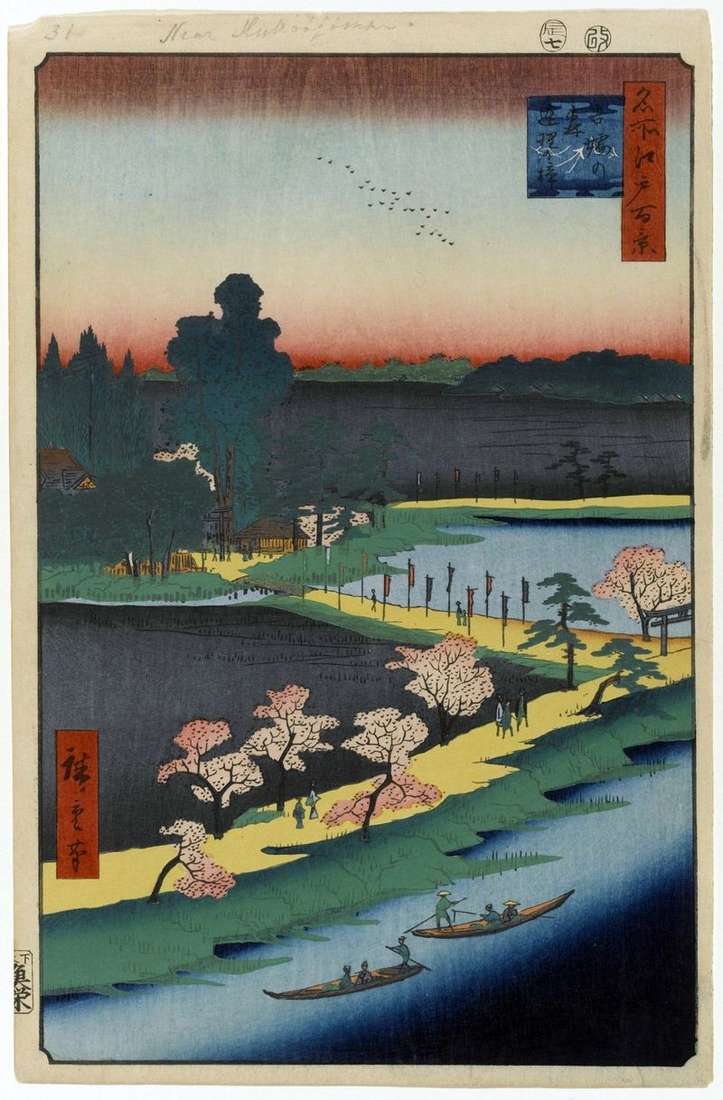 Agglomerated camphor trees at the sanctuary of Azuma-no Mori by Utagawa Hiroshige
Agglomerated camphor trees at the sanctuary of Azuma-no Mori by Utagawa Hiroshige